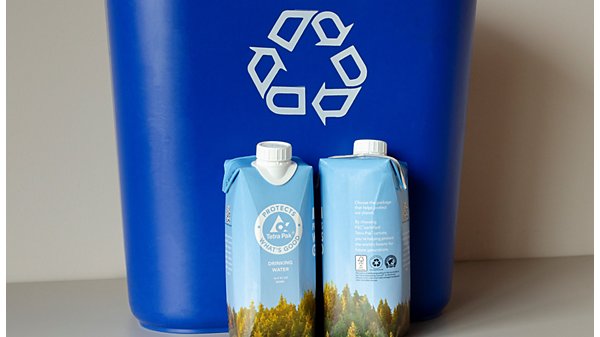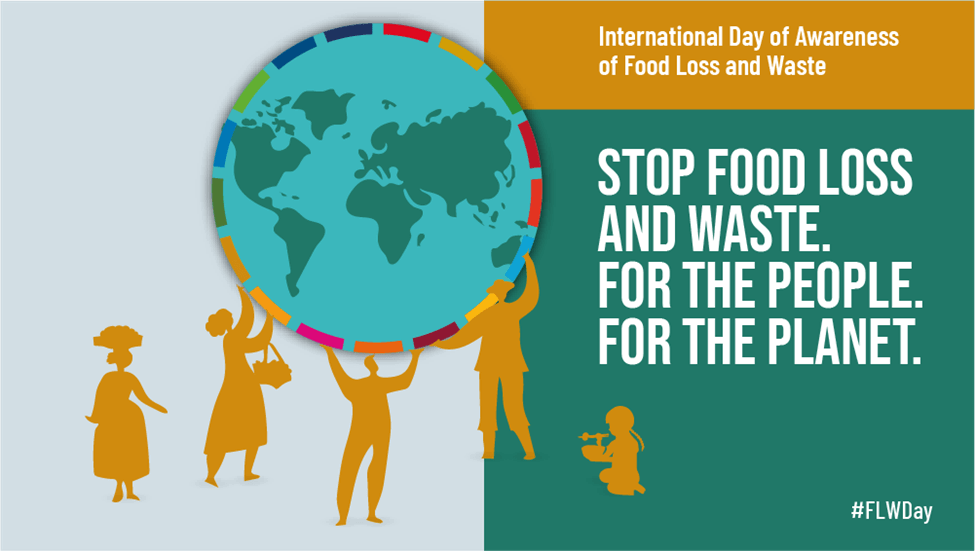Everyone experiences food waste, but the problem is much bigger than your kids not cleaning their plates or a few strawberries going bad in the fridge. In fact, one-third of all food produced globally never gets consumed, according to United Nations Food and Agriculture Organization.
More than just the loss of food that could have nourished people around the world, that waste produces a significant carbon footprint — an alarming 8% of greenhouse gas emissions worldwide can be attributed to food waste. This makes food waste a complex problem that not only impacts human wellness, but the wellness of the planet, too.
“To put the impact of food waste into perspective a bit, if food waste were a country, it would be the third most significant emitter of greenhouse gas emissions globally. That is why tackling food waste is an integral part of addressing climate change,” said Seth Teply, President and CEO, Tetra Pak, U.S. and Canada.

Food waste in the United States
Food waste in the U.S. in particular is concerning. Many people won’t buy or consume any foods that look less than perfect, including dented packages or blemished produce. Furthermore, there are no uniform descriptions for U.S. food label dating, which causes misunderstanding. This confusion compounds because food dating methods can also vary by state and even from company to company.
Do you know the difference between “use by,” “best before” and so on? According to the United States Food and Drug Administration, examples of commonly used phrases found on food include:
- “Best if Used By/Before” date indicates when a product will be of best flavor or quality. It is not a purchase or safety date.
- “Sell-By” date tells the store how long to display the product for sale for inventory management. It is not a safety date.
- “Use-By” date is the last date recommended for the use of the product while at peak quality. With the exception of some items, such as infant formula, it is not a safety date.
- “Freeze-By” date indicates when a product should be frozen to maintain peak quality. It is not a purchase or safety date.
How to prevent food waste
“When food is wasted, it is important to also consider the many resources, such as labor, transportation, water, etc., that were expended in the supply chain to get the product onto the shelf and into consumers’ homes,” explained Teply. “So, beyond food, these resources were wasted as well.”
Every effort counts, and you can make a big difference in your own home. Here are some simple ways you can help reduce food waste, so you can feel good about your impact on the planet and might save some money, too.
Avoid excess: Plan meals, make shopping lists and avoid impulse buys.
Understand the impact of your package: Food packaging plays a key role in keeping food safe and preventing spoilage. But, not all packages are created equally. Food and beverage cartons are a great choice because they are recyclable and they are made primarily from plant-based materials, which are better for the environment because they can be replenished over time and enable a move away from fossil fuel-based materials.
Understand labels: Know how foods are labeled so you can buy smart and avoid misunderstanding.
Embrace the ugly: Strange shapes or a few bruises don’t change the flavor. When fruit matures, such as spotted bananas, use for baking or smoothies.
Store food strategically: Know the right way to store fresh foods to make them last. For shelf staples, move new items to the back of cupboards so ones that expire sooner are up front.
Select shelf-stable packaging: Stock up on goods that can be stored in the cupboard, such as Tetra Pak® cartons that use heat treatment rather than additives or preservatives to allow for products to stay good on the shelf and safe to consume for long periods of time with no refrigeration required before opening.
Love leftovers: Whether at a restaurant or at home, package leftovers to eat another day or to use as an ingredient in another meal.
Compost: Rather than throw food away, consider composting. Many communities have programs to help you get started.
Share: If you have food that is expiring soon, share it by contacting your local food pantry or even asking friends and neighbors if they can put it to good use.

USDA STATEMENT:
Around the world, roughly one-third of food produced for human consumption is lost or wasted from farm to table, amounting to around 1.3 billion tonnes per year. Covid-19 has exposed vulnerabilities in our food systems and heightened the need to remedy food loss and waste (FLW), both locally and globally.
Reducing food loss and waste is a powerful means to strengthen the sustainability of our food systems and improve planetary health. How does food waste affect the environment? A great deal, it turns out. In the United States, more than 35 million tons of food went into landfills in 2018. Food waste in landfills generates methane, a potent greenhouse gas that contributes to climate change. Keeping food waste out of landfills is one way to help the environment.

September 29 is the International Day of Awareness of Food Loss and Waste, an opportunity to raise awareness of practices and innovations to reduce food loss and waste and build a more resilient food system. The United Nations Food and Agriculture Organization (FAO) delivered six key messages highlighting areas to catalyze change towards reduced food loss and waste. Here are some of those messages:
- Increasing the efficiency of our food systems and reducing food loss and waste requires investment in innovation, technologies, and infrastructure.
- Recovery and redistribution of surplus food improves access to food for the food insecure, while preventing food waste and ensuring economic, environmental, and social benefits.
- Composting food waste is better than sending it to a landfill but preventing food waste in the first place is an even better way to lessen the impact on the environment.
- Realizing and maximizing the positive impacts of reducing food loss and waste, requires good governance and human capital development, as well as collaboration and partnerships.
Ultimately, turning these messages into policies and practices locally and globally is the only way to ensure that we build a sustainable and resilient food system that has no room for food waste.
Read more blogs on the topic of food loss and waste. —— https://www.usda.gov/media/blog/2021/09/29/key-messages-international-day-awareness-food-loss-and-waste#:~:text=September%2029%20is%20the%20International,a%20more%20resilient%20food%20system.
